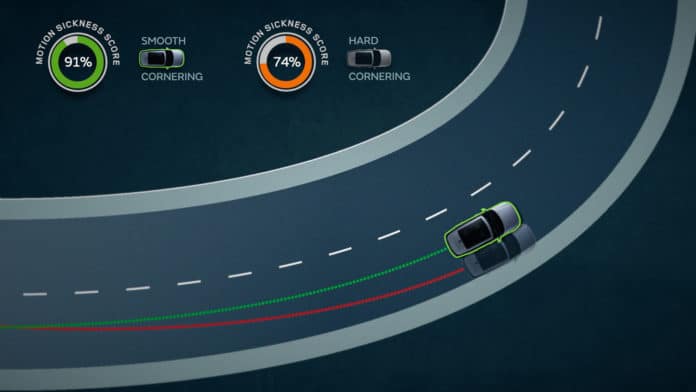Seeking to bring the greatest comfort to its customers when traveling in autonomous vehicles, Jaguar Land Rover is developing a software that will reduce motion sickness by adapting the driving style of future self-driving vehicles.
As the British firm has indicated, motion sickness affects more than 70% of the population that usually occurs when eyes observe information different from that sensed by the inner ear, skin, or body – commonly when reading on long journeys in a vehicle. Thanks to the new system, the factors that contribute to motion sickness – acceleration, braking, and lane position – can be optimized to prevent passengers from getting dizzy or nauseous.
Jaguar Land Rover’s idea promises to reduce the impact of motion sickness by up to 60%, thanks to intelligent software that combines more than 20,000 real-world and virtually-simulated test miles. Based on data gathered, the system processes a set of parameters for the evaluation of driving dynamics. Then advanced machine learning ensures that the vehicle can optimize driving based on collected data from every kilometer traveled by the autonomous fleet.
This technology can then be used to teach each Jaguar and Land Rover vehicle how to drive autonomously while maintaining the individual characteristics of each model of the two brands.
Solving the motion sickness problem unlocks the potential of autonomous driving. The new project by the British manufacturer, therefore, makes it possible to further refine the advanced driver assistance systems that will find their place on future Jaguar and Land Rover models.
“Mobility is rapidly changing, and we will need to harness the power of self-driving vehicles to achieve our goal of zero accidents and zero congestion. Solving the problem of motion sickness in driverless cars is the key to unlocking the huge potential of this technology for passengers, who will be able to use the traveling time for reading, working or relaxing,” explained Dr. Steve Iley, Chief Medical Officer of Jaguar Land Rover.
Additionally, Jaguar Land Rover points out that features such as cooling seats, ambient lighting, and multiple seat configurations are proven to significantly reduce the likelihood of motion sickness.
Recently, Jaguar Land Rover, in collaboration with the University of Cambridge, presented a no-touch touchscreen technology for use in cars that selects the correct item before the user’s hand reaches the display.
